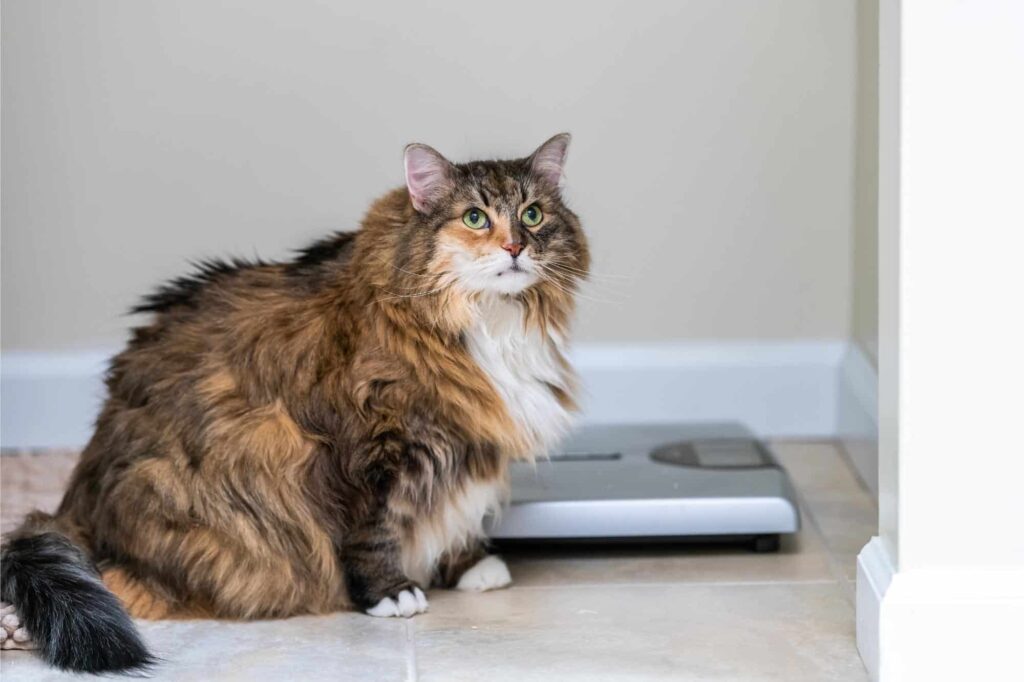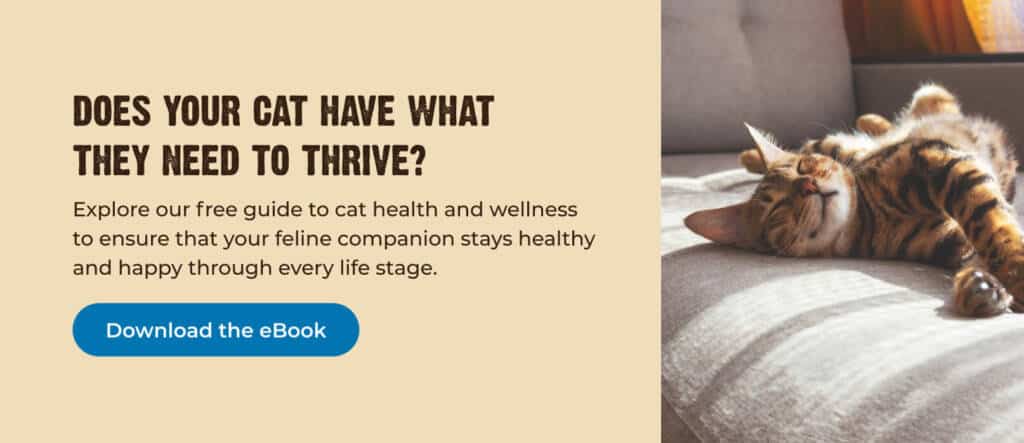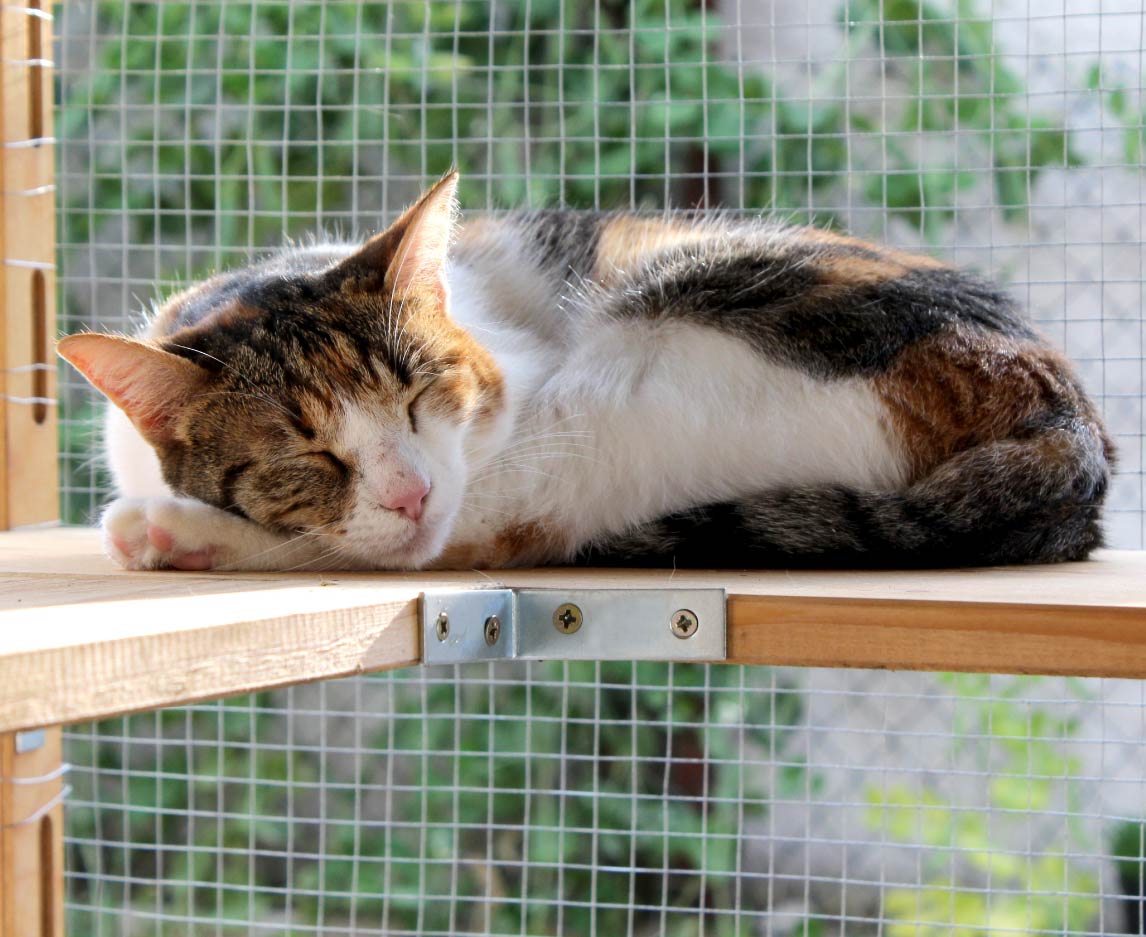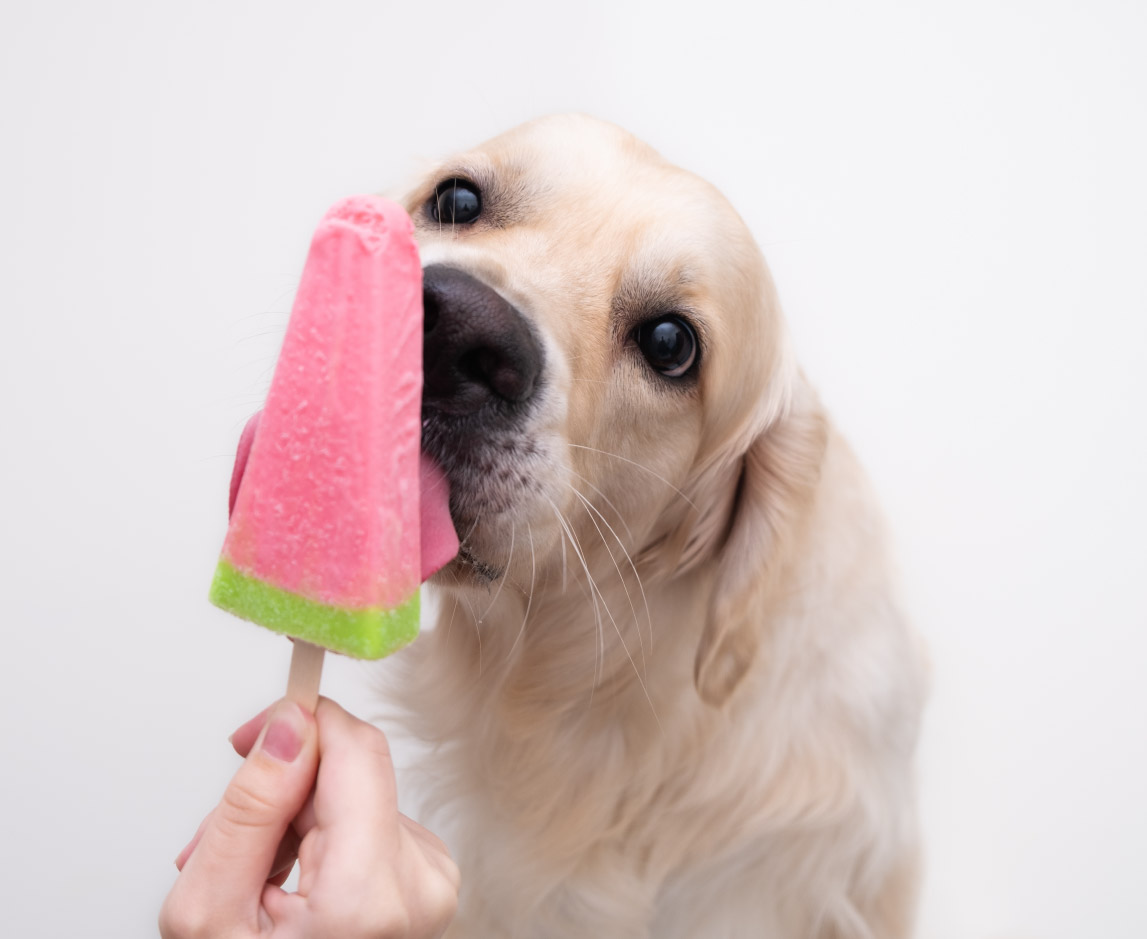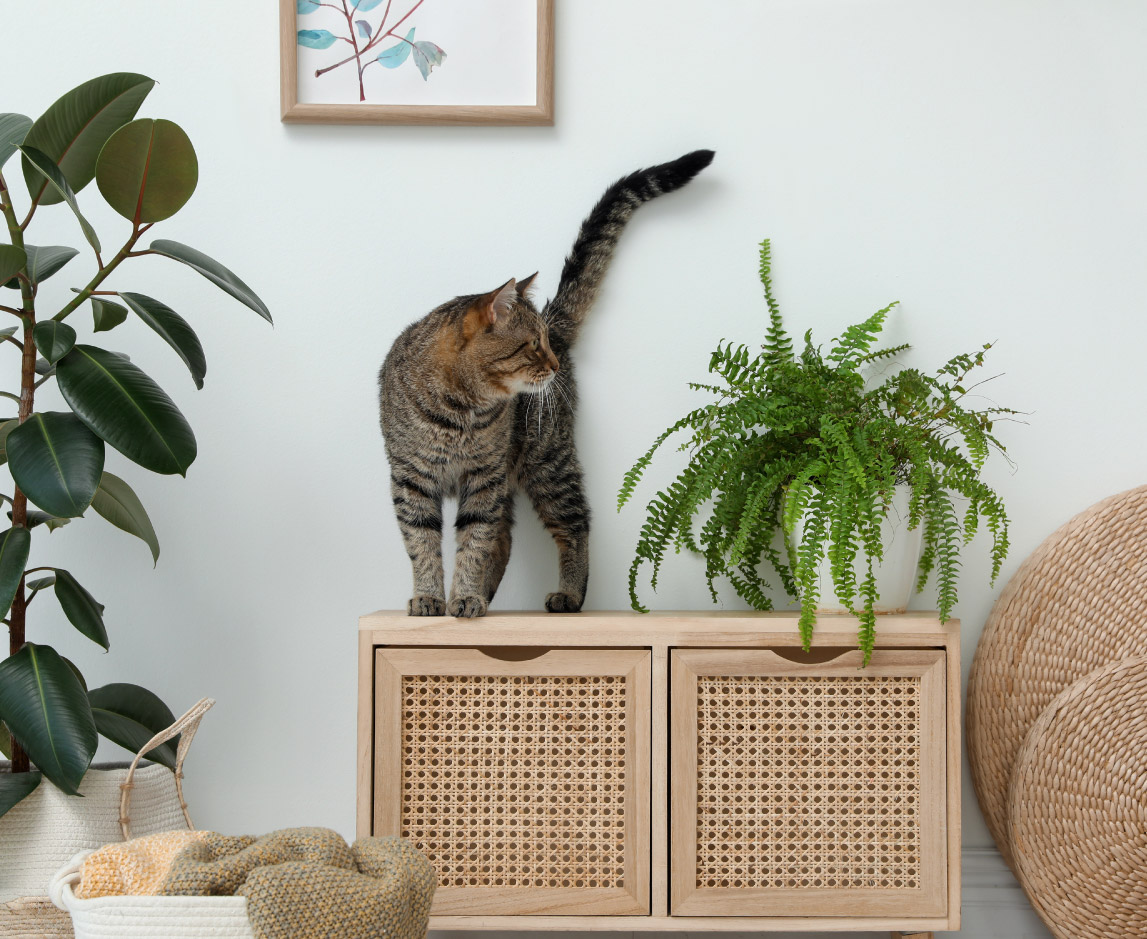How Much Should Cats Weigh?
It may seem like every other ad these days is about weight loss. Right now you’re probably thinking, “Don’t tell me my cat needs to get into bathing suit shape now too!” Not to worry — this article is concerned purely with your cat’s ideal weight as it pertains to their overall health.
When determining a cat’s healthy weight range, variables such as age, sex, breed and other health considerations should be taken into account. Current estimates show that more than 50% of domestic cats in North America are overweight and more than a third are considered obese. An ideal weight for a mid-size cat is 8 pounds; by gaining just 2 more pounds, they’re already 25% over their ideal weight! It’s important to monitor your cat’s weight in order to keep it below these thresholds.
Is My Cat Overweight? Determining Your Cat's BCS Score
Like humans, determining a cat’s ideal weight isn’t always as simple as calculating the average weight of felines in a similar size group. Working with a veterinarian to determine your cat’s Body Condition Score (BCS) is a comprehensive way to accurately find a cat’s ideal weight.
The BCS scale runs from 1 to 9, with 1 representing the least amount of body fat. A score of 5 represents a cat of a healthy, or “ideal” weight. When you pet a cat of an ideal weight, you will feel their backbone and ribs, but the outlines of the bones will not be visible through the cat’s fur. Cats of a healthy weight will have a slight tuck or indentation where their stomach is.
A BCS between 6 and 9 means that the cat is overweight. Overweight cats will have no definitive waist visible, resembling more of a block shape than a figure 8 when viewed from above.
A cat with a BCS between 1 and 4 is considered underweight. Underweight cats will have visible, perhaps protruding, back and rib bones with a severe tuck at their stomach.
Why Is a Healthy Cat Weight So Important?
While it’s often the visible aspects of excess weight that bring attention to the issue, vanity is not the primary concern when it comes to a cat’s weight. Many health issues can occur when a cat is overweight. The following are the most common:
Diabetes mellitus (Type 2): According to Fetch by WebMD, “just a couple of extra pounds can make your pet more likely to get some health problems such as type 2 diabetes and make others, like arthritis, worse.” Treatment of diabetes in cats requires insulin therapy and major changes to their diet.
Osteoarthritis: Osteoarthritis is a degenerative condition that affects the cartilage between joints. This condition is extremely common in cats as they age due to natural wear and tear on the body, and its onset can accelerate or worsen due to excess weight.
Urinary problems: Domestic cats as a species are notorious for urinary health issues such as urine crystals or kidney disease. Diabetes mellitus, a possible consequence of excess weight gain, can lead to lower urinary tract problems that can cause frequent or painful urination, bloody urine or frequent licking of the urinary opening, and can worsen with excess weight gain.
Heart disease: While some feline heart conditions are genetic and unavoidable, some (such as hypertension) can either be caused by or worsen with excess weight. Underweight cats have also been known to display irregular heartbeats.
How to Help Cats Maintain a Healthy Weight
1. Try a healthier cat food: As with humans, a cat’s body weight comes down to two variables: diet and physical activity. A diet that’s protein-rich, moderate in fat and low in carbohydrates, when combined with moderate physical activity, is optimal for today’s domestic cats.
2. Try replacing dry food with canned (wet) food: Like us, cats often confuse dehydration with hunger, and therefore have a tendency to overeat. Cats as a species also have a low thirst drive, which can lead to dehydration. Incorporating moisture-rich wet food in their diet is a great way to regulate your cat’s satiety levels.
3. Cut back on portion size: It can be difficult to say no to your pet, or to keep yourself from giving them a little extra. Be sure portion sizes don’t become too large — a half cup of wet or dry food per meal should suffice.
4. Try lower calorie food: Feeding your cat an amount of less calorically dense food that’s equal to the amount they usually receive keeps the volume of food consistent while reducing caloric intake.
5. Cut back on treats: Treats often contribute unnecessary and excess calories, so watch the amount of treats you give to your cat and curb if needed.
6. Encourage exercise: Physical activity is much less of a necessity for domesticated cats compared with their ancestors — no need to chase your prey if it’s already in your bowl! Incorporating exercise like play-hunting into your cat’s feeding routine can result in healthy weight loss. You can also slow the pace of a cat’s eating (and provide mental stimulation) with an interactive feeder.
7. Use an automatic feeder: Unportioned meals combined with the hustle bustle of daily life can lead cat parents to accidentally overfeed their cats. Consider using an automatic feeder that will portion out an appropriate amount of food every time.
8. Feed an overweight cat in a separate room: In a multi-cat home, monitoring each feline’s dietary intake can be challenging when each one is vying for the food dish. Try feeding overweight cats separately to avoid unwanted caloric intake.
9. Set goals: Remember that weight loss is a process and not instantaneous. Set gradual and attainable weight goals for your cat — say, within an ideal weight range by their next 6-month vet checkup.
10. Be patient: Over time, a cat that’s eating a healthy diet and getting enough physical activity will trend toward a healthy weight. If weight continues to be an issue despite your best efforts (either over or under an ideal target), consult your veterinarian.
Download our guide, How to Read & Decode a Pet Food Label, to learn what all the pet food industry jargon really means. >
How RAWZ Can Help
Monitoring your cat’s weight is of utmost importance when it comes to their overall health, especially since domestic cats are considered smaller animals. And just like humans, a cat’s weight has more to do with diet than exercise.
As obligate carnivores, felines depend on a predominately meat-based diet for their nutrition. RAWZ delivers highly digestible food that is rich in protein, low in carbohydrates, and possesses a low glycemic index and moderate fat levels. Products that hit all of these markers are the best food for overweight cats, as a balanced diet will help them maintain a healthy weight.
The good news is that obesity is highly preventable in domestic cats. By providing them with healthier, appropriately portioned food, we can improve the lives of our feline family members for years to come.


